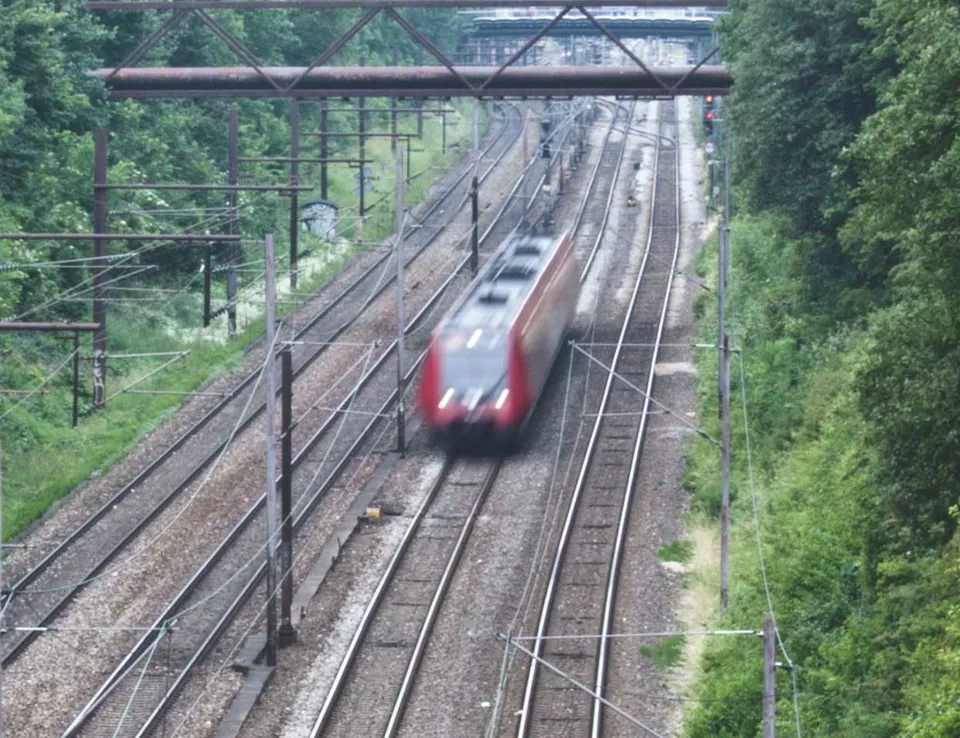that Eurostar must safely integrate with whilst operating across five European countries.

The trouble with cross-border rail in Europe
16 Apr 2024
Although rail travel in Europe can trace its history to the 19th Century, its evolution into a continent-spanning network capable of competing with road and air travel has been constantly hampered by commercial and bureaucratic barriers.
Indeed, it could be said that the very concept of seamless rail travel across Europe was doomed from day one. As each country took charge of assembling its own domestic network - to its own specifications - the continent became a patchwork of systems overseen by powerful national monopolies.
Whilst this created extensive national networks - even the smallest of towns can have direct rail connections to their nearest major city - services that cross into neighbouring countries were often relegated to winding branch lines, with operations beset with problems ranging from the incompatibility of track widths, voltages and signalling technologies, to the intransigence of the entrenched national operators.
Such is the parochial nature of European rail that by the turn of the 21st century more than 20 different signalling systems were still in use across the continent. A train departing Amsterdam from London, for example, would have to pass through ten different system boundaries, with vehicles fitted with all the requisite onboard equipment and driver teams qualified in the operating rules of each territory.
Even today, Eurostar, the passenger service that operates through the Channel Tunnel, contends with eight different signalling technologies across five countries.
And not all the blame can be put down to the short-sightedness of the early pioneers: when France, Spain and Italy developed high-speed networks in the 1980s and 1990s they were largely envisaged as national emblems showcasing domestic technological prowess.
Inefficient, expensive and shunned
Cross-border rail in Europe has long been perceived as inefficient, unreliable and expensive. And with good reason: in 2023, the environmental campaign group Greenpeace reported how long-distance rail in Europe cost, on average, twice that of flying. Travelling between London to Barcelona rail can cost up to 30 times more.
As a result, figures from 2019 (the last full year of pre-pandemic data) published by Eurostat, the official provider of EU statistics, found only 8% of the distance travelled by land within in the EU was by rail.
And yet with the EU’s own Sustainable and Smart Mobility Strategy expecting all 'scheduled collective travel up to 500km' to be carbon-neutral by 2030, rail transit - and electric-powered trains, in particular - must be front and centre of Europe’s future transport mix (according to the International Energy Agency, rail averages around one-fifth of the greenhouse-gas emissions per passenger-kilometre of air travel, measured on a well-to-wheels basis).


Signalling systems
The European Railway Traffic Management System (ERTMS) is a mix of on-board technology and mobile communications that will help bring a unified signalling and control system to Europe's mainline railways.
Spelling the end for lineside signalling systems, drivers will instead use on-board signalling equipment (referred to as the European Train Control System or ETCS) that receives information direct from regional control centres. This promises to:
By providing continuous communication-based data direct to in-service traffic, ERTMS promises to:
- Increase capacity on existing lines
- Support higher speeds:
- Improve safety and service reliability
- Reduce maintenance costs
- Simplify approval processes
In the rail sector a Notified Body (NoBo) is an organisation accredited to provide conformity assessments of products and subsystems against the relevant requirements of the European Directive on the Interoperability of the Rail System.
Ricardo Certification, a set of companies within the Ricardo group that perform independent assurance and testing services for the rail sector, helps its clients achieve a Certificate of Conformity by deploying multi- disciplinary teams of specialists to compile the Technical File and offer objective feedback throughout the process.
Learn more about our Notified, Designated and Approved Body services.
Not a level playing field
Europe's policy makers have been trying to address the situation. From the late 1980s various waves of legislation have attempted to forge a 'level playing field' across Europe's rail networks, tackling obstacles such as the opaque track access charges between Member States, and establishing common technical and operational standards.
So far these attempts to open up competition have delivered mixed results. Some countries have balked at the costs. Others have dragged their heels in adopting some of the measures.
The European Rail Traffic Management System (ERTMS), for example, has been championed for the more than 30 years as a common control and signalling system for mainline routes in Europe. But its widespread adoption has long been hindered by the machinations of an industry that continued to procure rolling stock - which have lifespans of upto 40 years - that were still designed for existing domestic signalling systems.
So, what to do?
Grasp its share of the growing market
To compete, cross-border rail in Europe must first find a way to reduce costs, and that means staying the course in its arduous journey towards standardisation and interoperability.
The Technical Specifications for Interoperability (TSI) were set up via an EU Directive to bring consistency to technical and operational standards for mainline railways. Extending across rolling stock, infrastructure, signalling and a range of operational factors, their aim is to ensure trains can operate anywhere in Europe.
The Control Command and Signalling TSI, for example, stipulates mandatory specifications for ERTMS. And with the European Railway Agency (ERA) installed as the central 'guiding mind' for ERTMS roll out supply chains are now falling into line as the technology becomes more standardised.
Journey times also need to be cut. The 2020 Eurobarometer travel survey found over a third (37%) of respondents would be willing to switch to a more ‘environmentally friendly’ mode of transport for long journeys provided they offer similar journey times.
And people will choose rail when it can offer genuine competition: according to the International Union of Railways (UIC), some high-speed rail services already have an 80% share over air travel on journeys under two and a half hours, with its ability to ferry passengers straight to city centres proving the key selling point.
EU programmes such The Trans-European Transport Network (TEN-T ) — a web of rail and road ‘corridors’ linking the continent’s major logistics hubs – should help speed up services and ensure there is more efficiency. TEN-T has provisions that all rail services on its routes offer minimum speeds of 160km/h by 2040. Similarly, the high-speed rail version, TEN-R, stipulates that any new such systems must be ‘interoperable’, meaning trains should be able to operate across them with greater ease.
Put customers before the bureaucracy
Meanwhile, as the technical and bureaucratic barriers are cleared, a more customer-centric approach must come to the fore. Train booking systems, for example, should provide a single journey planning and ticketing interface rather than expecting passengers to make a string of purchases from multiple operators with little confidence they have found the cheapest options or the right connections.
And, of course, Europe should continue to upgrade or build infrastructure where new demand likely exists. The conversion of the Budapest-Belgrade railway into a high-speed route – for which Ricardo Certification is the appointed Notified Body for the Serbian section – will reduce journey times between the two capitals from eight hours to less than three once the 350km upgrade is complete in 2025, creating an entirely new market in the process.
So, the opportunity is there. The demand and the rationale exist. Delivering it, however, requires a shift in mindset across every aspect of the railway, from national governments down through the entire industry supply chain.
The high costs, inefficiency and trundling journeys of European cross-border rail are a legacy of the industry’s earliest foundations. They need not be its future. But much rests on a fragmented sector coming together and overcoming its inertia.
How Ricardo can help you
We help infrastructure managers throughout the introduction of ERTMS systems.
Our experience with ERTMS (ETCS + GSMR/FRMCS), Automatische treinbeïnvloeding (ATB), Automatic train operation (ATO) and digitalisation means we will help you stay fully abreast of developments within the industry and provide bespoke solutions to challenges that arise in your own projects.
With deep technical knowledge of infrastructure and rolling stock design and maintenance processes, as well as specialist teams focused on vehicle-track interface issues, we can provide support across:
- Providing advice on migrating from legacy systems
- Business planning support and review
- Feasibility analyses, tender preparation and contracting
- Project engineering support re-signalling schemes
- Human factors, including workload analysis and ergonomic advisory (eg design of driver cab and control centre environments)
We also have extensive experience of providing trusted assurance roles on ERTMS installations, including pioneering projects such as the first deployment of ETCS in the UK and the migration of the entire Danish rail network to ERTMS operation and control. For more information on how we can help, contact our teams using the from below.





 Follow Ricardo plc for regular updates
Follow Ricardo plc for regular updates




